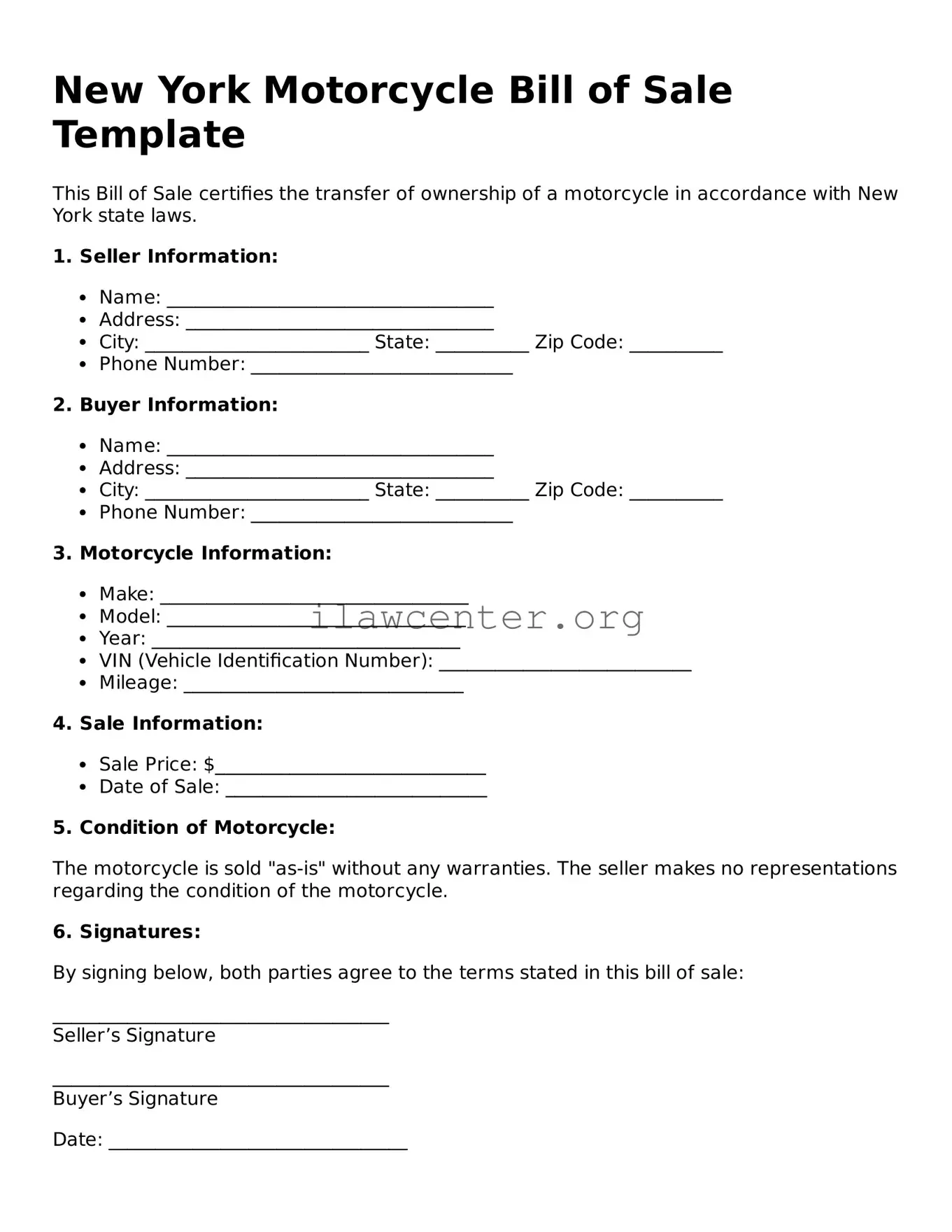Instructions on Utilizing New York Motorcycle Bill of Sale
Completing the New York Motorcycle Bill of Sale form is a straightforward process that requires accurate information about both the motorcycle and the parties involved in the transaction. Following these steps will ensure that all necessary details are properly recorded.
- Begin by entering the date of the transaction at the top of the form.
- Provide the seller's full name and address. This information is essential for identification purposes.
- Fill in the buyer's full name and address, as this indicates who will receive ownership of the motorcycle.
- Next, include a detailed description of the motorcycle. This should contain the make, model, year, color, and Vehicle Identification Number (VIN).
- Indicate the sale price clearly. If applicable, note any deposits that may have been paid.
- Both the seller and buyer should sign and date the form to validate the transaction.
- Make copies of the completed form for both parties, as this acts as a record of the sale.
Once the form is filled out and signed, both the buyer and seller should retain their copies for future reference. This document will serve as proof of ownership and is a critical component of ensuring a smooth transaction.
